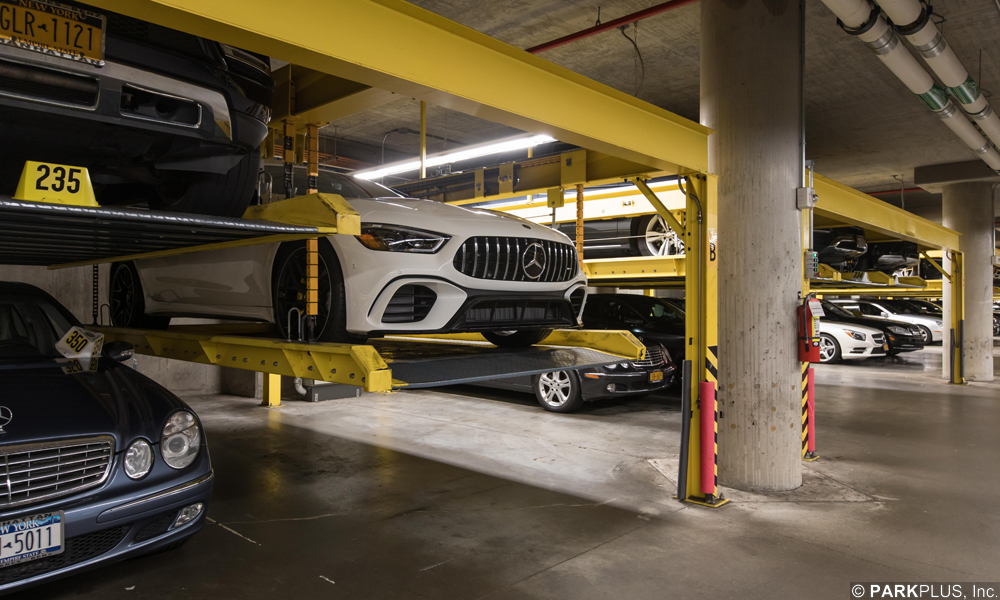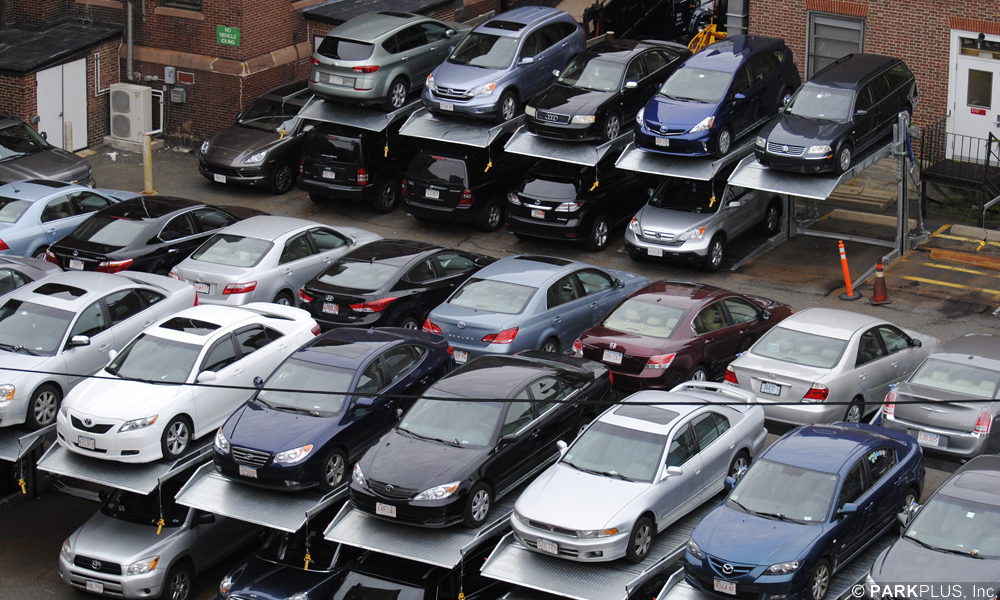Mechanical parking systems, also known as vehicle stackers or car lifts, are typically designed for attended parking applications and consist of simple mechanical lift devices that stack two, three, or four vehicles in an area normally occupied by a single vehicle.

A trained operator or attendant drives the vehicle onto a platform that is raised using a control device. This creates an additional space for another vehicle to be stored below. The process is repeated until the system reaches capacity. To retrieve a vehicle, the operator removes the vehicle in the grade position to lower the platform and return the stacked vehicle to ground level. Units running in series may have common vertical structural supports (legs/posts) to increase stability.
Layout options include standalone units, multiple adjoining units, tandem positioning, and/or back-to-back units. Mechanical stacker systems are typically limited to a maximum of four levels for efficiency and, in some instances, regulatory reasons.
Stacked Parking Systems
The double stacker is a mechanical two-level vehicle lift. The device lifts a vehicle on a platform so that an additional vehicle can be parked below. This is the most commonly used stacker in the United States.
Triple and quad stackers are three- and four-level vehicle lifts. These devices lift vehicles on nested platforms so that additional vehicles can be parked below (one car at grade and two to three above).
Stackers are available in hydraulic or electrically powered models. All systems can be enclosed with a roof structure and screening. Sustainably designed stackers include common legs between units for structural stability, reduced material, and space efficiency. Mechanical parking applications are limitless and include airports, offices, multifamily residential, hospitals, auto dealerships, and attended lots.
Suspended Platform Parking Lifts
A suspended platform is an additional system that is an innovative mechanical two-level vehicle lift for storing cars on raised platforms.

The suspended platform lifts vehicles on suspended platforms supported by a building-integrated frame structure, providing a column-free area for better utilization of space below.
These systems allow for a maximum of three-across per frame structure and can be used in parking spaces as well as above drive aisles to increase capacity in irregular spaces.
###
This content is part of The American Institute of Architects (AIA) and U.S. Green Building Council (USGBC)-accredited course, Introduction to High-Density Parking Systems. Take the course online or register for/request one of our webinars to learn more and earn continuing education points.



 844-472-7575
844-472-7575
